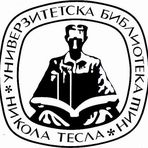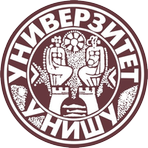Title
Uticaj različitih mineralnih dodataka na osobine samougrađujućih betona
Creator
Despotović, Iva
Copyright date
2014
Object Links
Select license
Autorstvo-Nekomercijalno-Bez prerade 3.0 Srbija (CC BY-NC-ND 3.0)
License description
Dozvoljavate samo preuzimanje i distribuciju dela, ako/dok se pravilno naznačava ime autora, bez ikakvih promena dela i bez prava komercijalnog korišćenja dela. Ova licenca je najstroža CC licenca. Osnovni opis Licence: http://creativecommons.org/licenses/by-nc-nd/3.0/rs/deed.sr_LATN. Sadržaj ugovora u celini: http://creativecommons.org/licenses/by-nc-nd/3.0/rs/legalcode.sr-Latn
Language
Serbian
Cobiss-ID
Theses Type
Doktorska disertacija
description
Datum odbrane: 12.03.2015.
Other responsibilities
mentor
Grdić, Zoran 1959-
član komisije
Radonjanin, Vlastimir 1957-
član komisije
Topličić Ćurčić, Gordana
Academic Expertise
Prirodno-matematičke nauke
Academic Title
-
University
Univerzitet u Nišu
Faculty
Građevinsko-arhitektonski fakultet
Group
Katedra za materijale i konstrukcije
Publisher
[I. Despotović]
Format
130 listova
Abstract (en)
Over the last twenty years the two contradictory processes, connected to the durability of concrete structures, were observed: improvement of the quality of concrete mixtures, as a result of a continious growth of the knowledge in technology and of the improvement of codes and standards, led toward the potential durability of concrete structures, and a general decline of the quality of performance of the works, because of gradual reduction in the number of well skilled workers in concreting, affecting a decrease of actual durability of concrete structures. The exceed of the gap between these two mutual opposed processes can only result through a decisive increase of the industrialisation level of the construction process of works, i.e. through the elimination of the effect of „man – factor“ on the quality of performed structures. By use of Self–Compacting Concrete it is possible to achieve this aim. The durability of structures then exclusively depends on the achieved quality of concrete mixture.
Developed during last decade of 20th century in Japan and continental Europe, today, Self-Compacting Concrete is applied in USA and United Kingdom as much as in the Middle East. By it’s nature, Self-Compacting Concrete does not need compaction by vibration. Compaction of this concrete, in every part, or in every corner of the formwork, including it’s hardly available parts, is done without any external forces except it’s own weight. These properties are achieved by adding superplasticizers, commonly with new Viscosity Modification Admixtures, or/and determened amount of powders. It is possible to use different mineral additions, where the use of those who are industrial by - product (like fly ash) has multiple environmental benefits.
Concept of sustainable development, which beside sociological and economic aspects, include saving of energy, environment protection and preservation of an restorable natural resources, presents strategic determination of various economic sectors. In that way great contribution is expected from construction industry. Lack of natural aggregate in urban areas and increasing distance between deposits of high – quality natural aggregate and building sites, forced building contractors to analyze possibility of change of natural aggregate with recycled materials (masonry, slag, concrete, etc.). On the other hand, huge amount of old concrete exists in urban areas and it’s removal and deposition is a big ecological problem.
Aim of this paper is analysis of properties and technology of Self-Compacting Concrete with different mineral additions (lime, fly ash and silica fume), natural and recycled aggregate, considering mixes without recycled aggregate, with third recycled fraction, and with second and third recycled fractions.
Authors Key words
samougrađujući beton, mleveni krečnjak, leteći pepeo, silikatna prašina, reciklirani agregat, ekološki aspekt, svojstva, tehnologija
Authors Key words
Self - Compacting Concrete, lime, fly ash, silica fume, recycled aggregate, ecological aspect, properties, technology
Classification
666.972.1/.16(043.3)
Type
Elektronska teza
Abstract (en)
Over the last twenty years the two contradictory processes, connected to the durability of concrete structures, were observed: improvement of the quality of concrete mixtures, as a result of a continious growth of the knowledge in technology and of the improvement of codes and standards, led toward the potential durability of concrete structures, and a general decline of the quality of performance of the works, because of gradual reduction in the number of well skilled workers in concreting, affecting a decrease of actual durability of concrete structures. The exceed of the gap between these two mutual opposed processes can only result through a decisive increase of the industrialisation level of the construction process of works, i.e. through the elimination of the effect of „man – factor“ on the quality of performed structures. By use of Self–Compacting Concrete it is possible to achieve this aim. The durability of structures then exclusively depends on the achieved quality of concrete mixture.
Developed during last decade of 20th century in Japan and continental Europe, today, Self-Compacting Concrete is applied in USA and United Kingdom as much as in the Middle East. By it’s nature, Self-Compacting Concrete does not need compaction by vibration. Compaction of this concrete, in every part, or in every corner of the formwork, including it’s hardly available parts, is done without any external forces except it’s own weight. These properties are achieved by adding superplasticizers, commonly with new Viscosity Modification Admixtures, or/and determened amount of powders. It is possible to use different mineral additions, where the use of those who are industrial by - product (like fly ash) has multiple environmental benefits.
Concept of sustainable development, which beside sociological and economic aspects, include saving of energy, environment protection and preservation of an restorable natural resources, presents strategic determination of various economic sectors. In that way great contribution is expected from construction industry. Lack of natural aggregate in urban areas and increasing distance between deposits of high – quality natural aggregate and building sites, forced building contractors to analyze possibility of change of natural aggregate with recycled materials (masonry, slag, concrete, etc.). On the other hand, huge amount of old concrete exists in urban areas and it’s removal and deposition is a big ecological problem.
Aim of this paper is analysis of properties and technology of Self-Compacting Concrete with different mineral additions (lime, fly ash and silica fume), natural and recycled aggregate, considering mixes without recycled aggregate, with third recycled fraction, and with second and third recycled fractions.
“Data exchange” service offers individual users metadata transfer in several different formats. Citation formats are offered for transfers in texts as for the transfer into internet pages. Citation formats include permanent links that guarantee access to cited sources. For use are commonly structured metadata schemes : Dublin Core xml and ETUB-MS xml, local adaptation of international ETD-MS scheme intended for use in academic documents.


